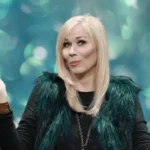Ever wonder who’s the ‘blackest person in the world’? It sounds like a strange question, but many people might want to know the answer. The first thing people have always been curious about is skin tone, especially very dark skin, as some people have always had much deeper shades of melanin, which is the natural pigment in our skin that gives our skin color.
However, at this point, there is no official way to measure who has the darkest skin, which is a little tricky. Even without clear winners, there are still people and communities with deep, rich skin tones that we can look to.
In this article, we will look at some of the people who are referred to as the ‘blackest’ in the world, the places where you find some of the darkest skin tones. Whether it be models like Nyakim Gatwech or the ethnic groups of South Sudan, we’ll be looking at how skin tone and identity are being celebrated more and more powerfully.
What Makes Someone the Blackest Person in the World’?
People with the darkest skin tend to have the title of the blackest person in the world. It’s due to melanin, a pigment that protects the skin from UV rays. Some of the darkest skin tones are in people in the region near the equator, such as South Sudan and Papua New Guinea, where people there have evolved to have more melanin as protection from the sun.
Culture also plays a role beyond genetics. In Sub-Saharan Africa, people with deep skin tones have adapted to the environment over many generations. But it’s not just about skin color: The views of beauty are shifting. Nyakim Gatwech and Khoudia Diop are proudly remaking models with their darkest skin in a bid to inspire greater acceptance among others.
Today, in the fashion and beauty industries, everything is changing for the better, showing that all skin tones are beautiful, with more representation of the deepest skin tones.
Notable Figures Recognized as the Blackest People
Now, in this section, we’ll look at some of the highest-profile dark-skinned people who made an impact not just on themselves but on changing the way people think about beauty. They have not only accepted their skin tone but have become icons of confidence and empowerment. They inspired many to redefine beauty beyond the norm.
Nyakim Gatwech: The Queen of Dark
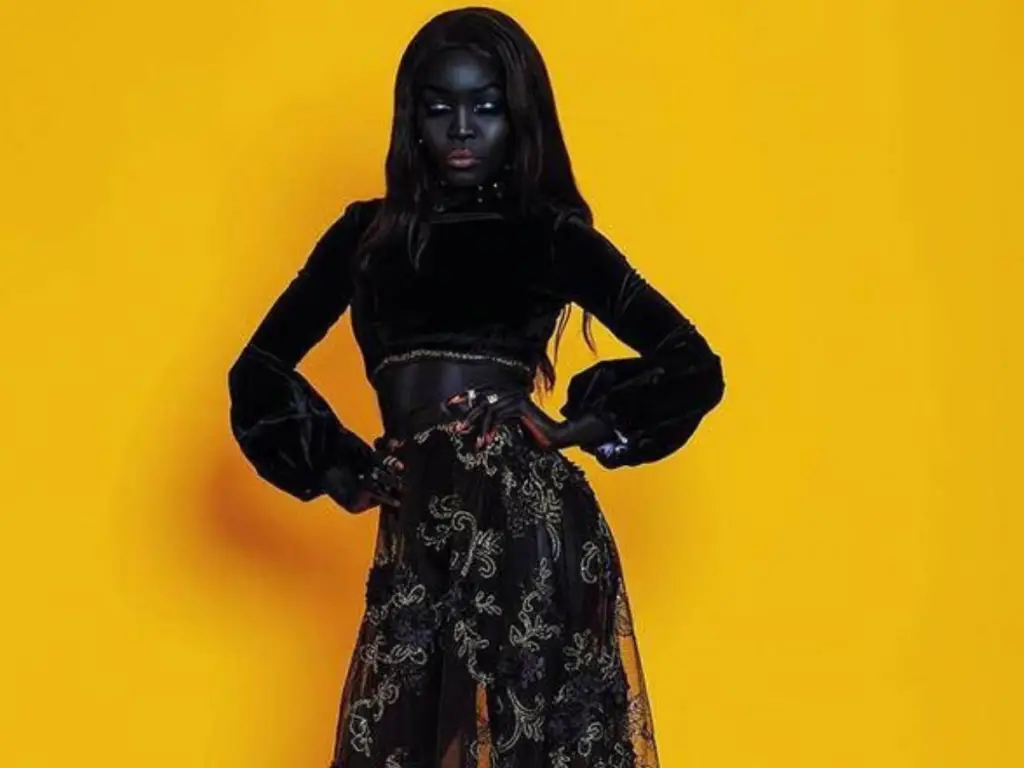
Nyakim Gatwech, the South Sudanese American model famously known as ‘the Queen of Dark.’ Her deep, radiant complexion has made her one of the most recognized individuals when you are discussing the blackest people in the world. On her platform, she speaks out about embracing your uniqueness and body positivity. Nyakim has had a big rise in fame; she had to put up with being bullied as a kid because of her skin colour. She just now proudly represents dark skin and continues fighting traditional beauty standards.
Khoudia Diop: The Melanin Goddess
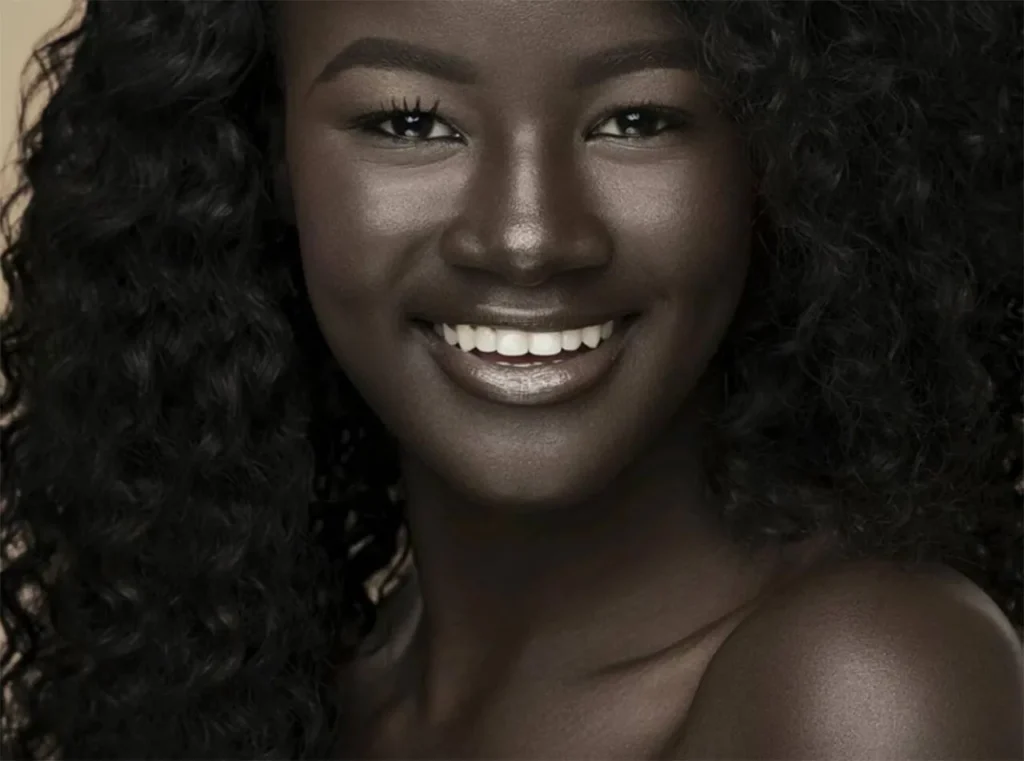
Another leading example of the intense dark skin known as the “Melanin Goddess” from Senegal’ is Khoudia Diop. She has become famous worldwide for her amazing look and determination to spread mainstream beauty standards. Khoudia has been leading the way to embracing one’s natural beauty, and it’s been a journey from a young girl who was not able to accept herself to a role model – something that has inspired many.
Alek Wek: Breaking Barriers in Fashion
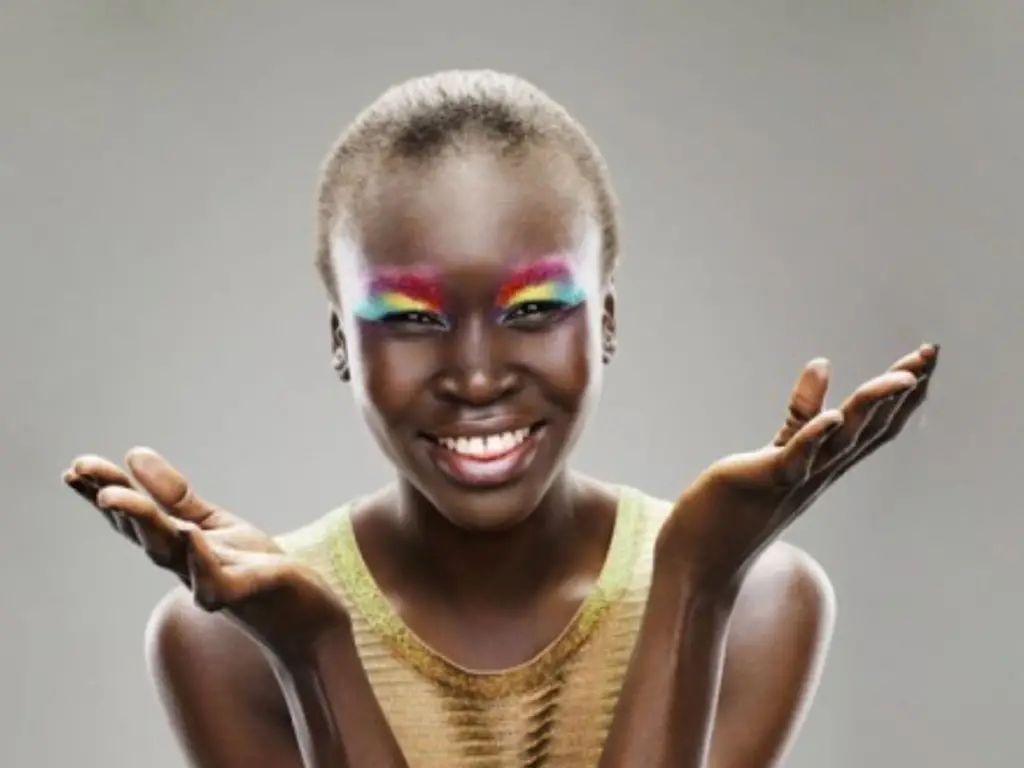
One late 1990s fashion industry breaker was Alek Wek, a South Sudanese model. She was one of the blackest people in the world and made a show of diversity in an industry that remains predominantly Eurocentric. Alek’s dark skin tone and striking features made her one of the first dark-skinned models to become recognized internationally. It also opened the door for many future models with the same skin tones to shine in the spotlight of mainstream media and fashion.
Anok Yai: Rising Star with Dark, Flawless Skin
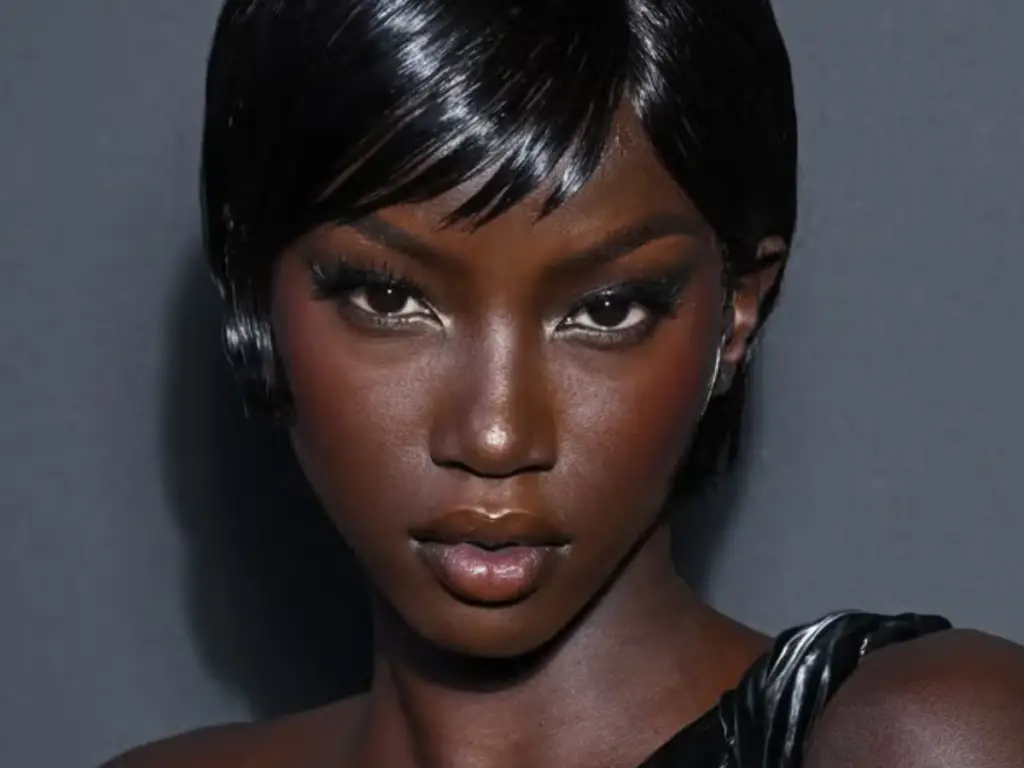
After a viral photo from a college event, Anok Yai, of Egyptian-Sudanese descent, quickly became a star. Her flawless skin and deep features have made her one of fashion’s favorite models. Anok’s runway presence is a sign of dark skin beauty and a challenge to the industry tradition of favouring lighter-skinned models. Even now, she continues to disprove barriers, represent diversity, and empower everyone regardless of skin tone.
Duckie Thot: From Australia’s Next Top Model to Global Runways
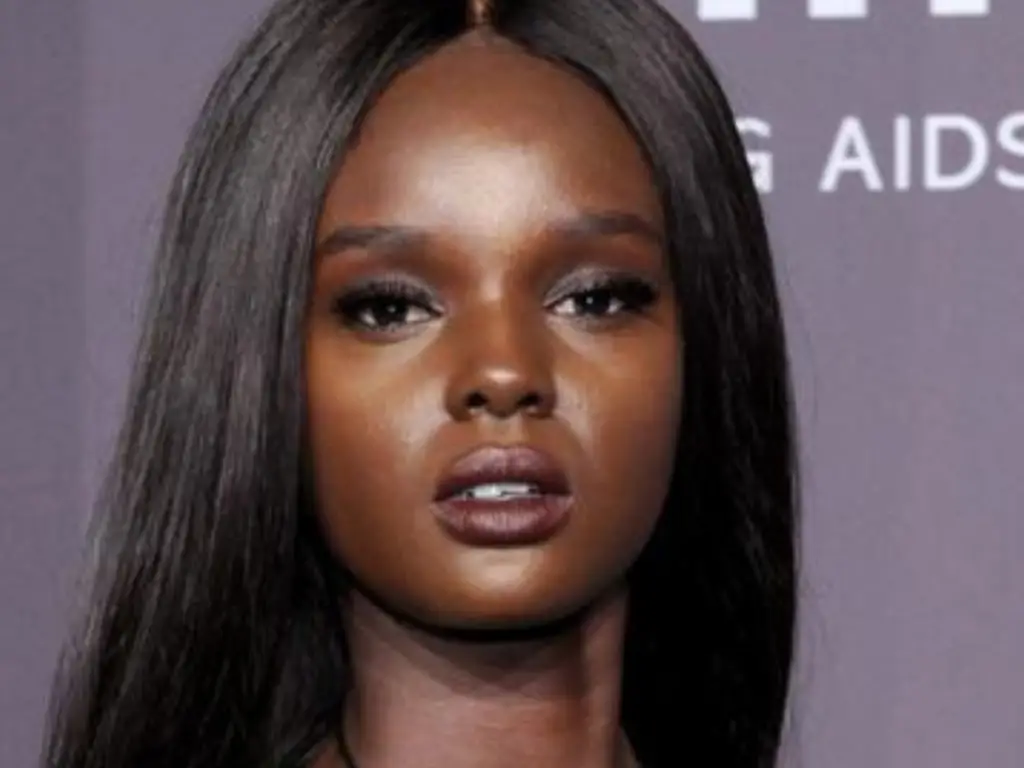
Known for her stunning dark skin and beautiful face, Duckie Thot was born in South Sudan and lives in Australia. She became a global fashion icon after appearing on Australia’s Next Top Model. Duckie has reportedly worked with major brands and graced the covers of top magazines. Duckie is one of the blackest people in the world and has used her platform over the years to celebrate her skin color and inspire others (especially dark-skinned girls) to get out there and celebrate their blackness.
Dark-Skinned Ethnic Groups Known for Their Rich Pigmentation
Different ethnic groups worldwide are known to have deep, rich pigmentation associated with their regions. Dark skin tone has adapted over time because these groups live in environments with intense sunlight. Now, let’s look at some of the ethnic groups that are most famous for their dark pigmentation and personality.
1- Dinka and Nuer: The Darkest People of South Sudan
The Dinka and Nuer peoples are among the blackest peoples of the world and are from South Sudan. They lived in one of the sunniest regions near the equator, and both groups are famous for how tall they can get and their dark skin. They are adapted to the harsh sun, and their deep pigmentation helps protect them against UV radiation. The physical features of the Dinka and Nuer are symbolic of their resilience in a difficult environment and are part of an incredible cultural heritage.
2- Maasai: Warriors with Rich Pigmentation
Another example of a dark skin group is the Maasai people, living in Kenya and Tanzania. Although they are known for their semi-nomadic way of living and warrior traditions, the Maasai have settled in a land of direct sunshine throughout the year. It’s because they live in an environment that has high UV radiation. The Maasai’s deep complexion, coupled with their way of dressing and their customs, have made them one of the best recognized, observed, and admired ethnic groups in Africa.
3- Himba: Unique Pigmentation and Cultural Practices in Namibia
The Himba people of Namibia are famous not only for their dark skin but also for their unique cultural practices. For instance, the Himba are known for smearing a mixture of butterfat and ochre onto their skin, making their skin look red, but their dark skin is obvious all the same. The Himba pigmentation is part of the reason they survive in the Namibia desert environment – protecting them from the sun.
4- Shilluk: Dark Skin Tied to the Nile River’s Sunlight
Another ethnic group of people with dark skin who provide protection against extreme sun exposure is the Shilluk, living along the Nile River in South Sudan. It is an adaptation to their bright, hot environment, the same way as Dinka and Nuer, who also have rich pigmentation. In addition, Shilluk’s deep skin tone has also contributed to the formation of their cultural practices — from clothing to social rituals. One of many African ethnic groups with the blackest skin, the Shilluk, shows the diversity in pigmentation on the continent.
5- Papuans: Dark Skin of Melanesia
The Indigenous Papuan people of Papua New Guinea are especially known for their very dark skin color in Melanesia. Living near the equator, where the sun’s rays are strongest, explains their pigmentation. A distinctive feature of the Papuans is their deeply tanned skin; they distinguish themselves from other ethnic groups in that part of the world.
Cultural Significance of Dark Skin in Various Communities
In countries around the world, dark skin is a lot more than a physical characteristic; it’s an identity. For other communities, dark skin is a sign of strength, beauty, and ties with one’s ancestors. So, let’s look at how various groups celebrate their deep skin tones.
1- The Dinka and Nuer: Cultural Pride in South Sudan
People with the Dinka or Nuer heritage in South Sudan have dark skin because they live in a sunny part of the world. This skin tone is much more than an adaptation to the sun for them; it’s a point of pride. Each is worn by the people without their blackest skin to demonstrate their resilience and their connection to their land. Dark skin is seen as something to admire in their culture and is part of what differentiates them. They’re tied to their identity and survival in a hot, dry environment.
2- Maasai: Beauty and Survival in the Kenyan and Tanzanian Savanna
Kenya and Tanzania are home to the Maasai people, who feature darker skins from the strong sun of the savanna. Dark skin isn’t just about looking good for the Maasai; it’s about survival. And over the years, they have kept their skin tone a sign of their beauty and strength in their community. They celebrate their dark skin through traditional dances and ceremonies, where it’s seen as a mark of health, vitality, and pride.
3- Himba: Reddish Tints and Protection in Namibia
Namibia’s Himba people are synonymous with a mixture of butterfat and ochre applied to the skin. But underneath, they have naturally dark skin, and this gives their skin a reddish tint. The Himba’s dark skin protects them from the hot and dry desert sun. Dark skin is a symbol of connection to their ancestors and the land in their culture.
4- Shilluk: Symbol of Beauty and Connection to the Nile River
The people of the Shilluk, who live near the Nile River, also have dark skin too. In fact, they are all the same, like the Dinka and Nuer, who also possess this skin tone as a response to the sunny environment that they live in. The Shilluk, for instance, find beauty in dark skin and place that importance in the culture. Their tradition and celebration of that is a symbol of strength and unity.
5- Papuans: Cultural Identity and Skin Tone in Melanesia
In Papua New Guinea, dark skin is a big part of the Papuan people’s identity. A symbol of pride, their blackest skin is embraced in their rituals and celebrations. Dark skin is an important part of their culture and traditions for the Papuans and represents strength and relationship to the land. Body art, dances, and ceremonies commemorate their dark skin, and it is something they are highly proud of.
The Role of Fashion and Media in Promoting Dark Skin
Fashion and media have played a very big part in changing the way people see dark skin in recent years. Beauty standards weren’t always determined by skin colour, but that’s slowly starting to shift. These days, skinned people are being celebrated more than ever, as many dark-skinned models and influencers are getting a lot of attention.
In the past, fashion has been slow to change, but now, more dark-skinned people are in runway shows, ads, and magazine covers. Models such as Nyakim Gatwech, Khoudia Diop, and Alek Wek have helped to break down barriers and demonstrate that dark skin is not less beautiful than other skin tones. For example, Nyakim Gatwech is the ‘queen of the dark’ and hopes to encourage everyone to love their natural beauty.
In addition, social media has had such an impact. Dark-skinned influencers can share their stories on platforms like Instagram or TikTok and spread messages of self-love. Duckie Thot and others like her are helping other people feel proud of their dark skin and proving that beauty runs through all shades.
These changes in fashion and media helped to spread appreciation of dark skin and its visibility, so finally, beauty isn’t all about lighter skin.
Embracing Dark Skin: A Personal and Global Movement
It has become both a personal journey and a global shift towards embracing dark skin. It is, for many, about accepting your natural appearance and refusing to fall in line with outdated beauty standards. It’s not about pride for the individual but pride for the world on how it perceives beauty.
However, dark skin has always been subjected to discrimination and bias, especially used to pressure to whiten their skin so they could fit in. In the last few years, however, people have been reclaiming their beauty and their natural melanin. However, it is influencers, models, and activists who are leading this change by spreading messages of self-love, acceptance, and confidence.
It’s gaining momentum around the globe as many celebrities and social media influencers such as Nyakim Gatwech and Khoudia Diop are harnessing their platform to inspire. It encourages people to proudly embrace their dark skin and that beauty doesn’t have to come in one shade. The movement to champion dark skin empowers people of all skin tones as more people around the world start to value the beauty of diversity. It changes the narrative and tells us that dark skin is not something to be feared or hidden but is actually something to be celebrated.
Conclusion
Finally, we can say that there’s no official title for the “blackest person in the world,” but we can applaud individuals who proudly wear their dark, rich skin as a badge of honor and help others follow their lead. The icons are Nyakim Gatwech, Khoudia Diop, and Alek Wek, who are leading the way by showing the world that dark skin is beautiful and powerful. These people are not revolutionizing the fashion world; they are revolutionizing the way we view beauty.
For the people of Papua New Guinea and for the communities of South Sudan, dark skin has always been a sign of strength, survival and cultural pride. We’re seeing more representation in media and fashion, so we know beauty comes in all shades, and every skin tone deserves to be celebrated. It’s a reminder that moving toward embracing and loving dark skin is something that is growing more and more, with confidence and pride, able to change the way we feel about ourselves and others.
Frequently Asked Questions
1- Why do some people have darker skin?
Darker skin is due to more melanin, which protects against the sun. People closer to the equator, like in South Sudan, have adapted to stronger sunlight.
2- How is dark skin seen in different cultures?
In many cultures, dark skin symbolizes strength, pride, and a connection to the land, like with the Dinka, Nuer, and Maasai.
3- Are there famous people who promote dark skin and body positivity?
Yes! Models like Nyakim Gatwech and Khoudia Diop inspire others to embrace their dark skin and challenge beauty standards.
4- How is the fashion world changing for dark-skinned people?
Fashion is becoming more inclusive, with dark-skinned models featured in ads and runway shows, showing that all skin tones are beautiful.
